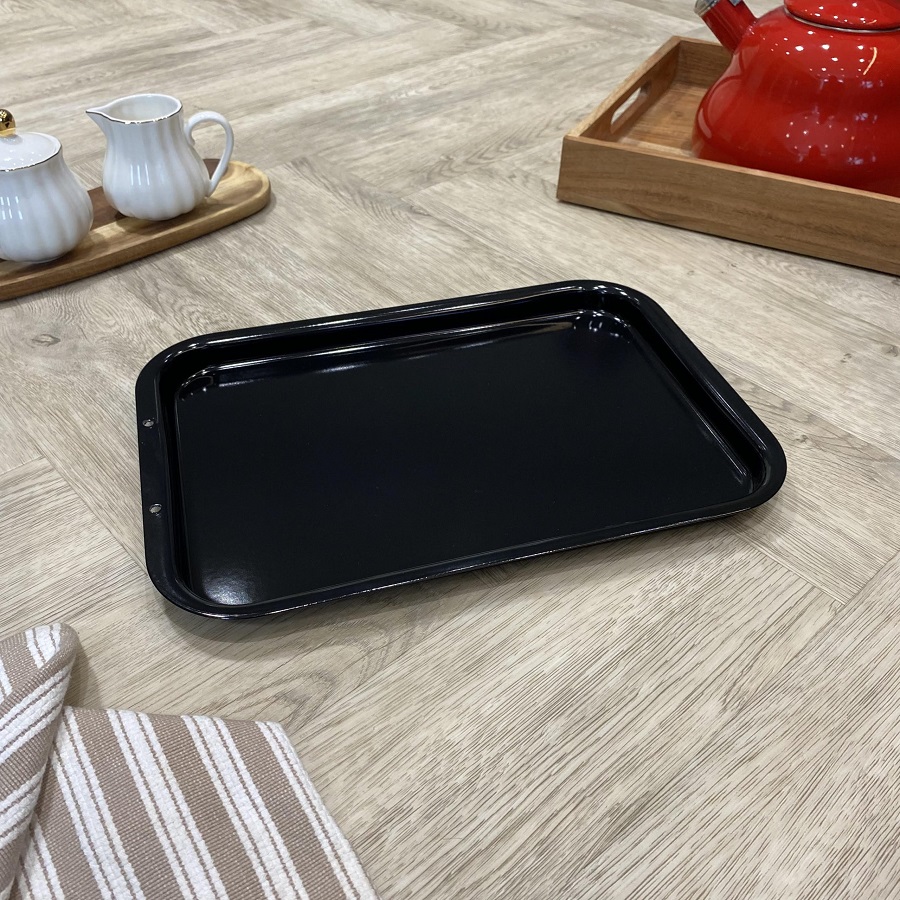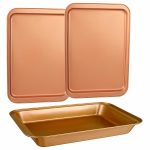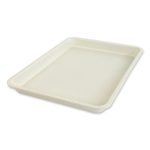Introduction
In the world of cooking and baking, many home cooks gravitate towards large appliances and utensils, often overlooking the small yet powerful items in their kitchens. Among these, small baking sheets stand out as versatile tools that can enhance your culinary repertoire significantly. While they might be modest in size, the impact they can have on your cooking endeavors is profound. Let’s dive into the endless possibilities that small baking sheets offer, from roasting vegetables to baking cookies, and how you can elevate your culinary skills with these compact tools.
 Understanding the Small Baking Sheet
Understanding the Small Baking Sheet
Before we explore their versatility, it’s essential to understand what small baking sheets are. Generally, these sheets measure approximately 9 x 13 inches or smaller, making them ideal for various tasks. They’re made from several materials, such as aluminum, stainless steel, or non-stick coatings, which can affect cooking performance. The smaller size allows for easy storage and handling, making them perfect for both small kitchens and large, bustling ones.
Roasting Vegetables
One of the simplest yet most rewarding uses for small baking sheets is roasting vegetables. Roasting brings out the natural sweetness of vegetables, while the high heat creates a beautiful caramelization on the outside. Here’s how you can make the most of your small baking sheet for roasting:
- Select Your Vegetables: Choose seasonal vegetables for the best flavor and nutritional value. Root vegetables like carrots and potatoes are great, as are cruciferous options like Brussels sprouts and cauliflower.
- Prep with Precision: Cut your vegetables into uniform sizes to ensure even cooking. Toss them in a light coating of oil and season with salt, pepper, and any herbs or spices you prefer.
- Organize on the Sheet: Lay the vegetables in a single layer on the baking sheet to prevent steaming. Avoid overcrowding; this is vital for achieving that sought-after crispiness.
- Monitor Cooking Time: Roast at a high temperature, typically around 425°F (220°C), and check for doneness after 25-30 minutes. Stir halfway through to ensure even browning.
The result? Perfectly roasted vegetables that can be served as a side dish, tossed into salads, or mixed into grain bowls—showcasing the small baking sheet’s ability to do more than just cookies.
Baking Cookies
Cookies are another classic application for small baking sheets. The compact size makes it easy to batch-bake several dozen cookies without taking over your kitchen space. Here are some tips for cookie perfection:
- Choose Your Cookie Recipe: Whether you’re making classic chocolate chip cookies or experimenting with exotic flavors like cardamom or matcha, small baking sheets can handle it all.
- Spacing is Key: When placing the cookie dough on the sheet, ensure ample space between each mound. Cookies will spread while baking, and you don’t want them merging into one another.
- Monitor Baking Time: Because small baking sheets conduct heat effectively, cookies may bake faster than instructed in standard recipes. Keep an eye on them and remove the cookies when they’re golden brown on the edges yet still soft in the center.
- Cool in Phases: Let the cookies cool on the baking sheet for a few minutes before transferring them to a wire rack. This initial cooling allows them to firm up slightly, preventing breakage.
Imagine serving warm, straight-from-the-oven cookies to family and friends. The satisfaction of baking something delicious with a simple yet effective tool is unmatched!
Broiling
While often overlooked, many small baking sheets are also suitable for broiling. This high-heat cooking method can be a game changer in your culinary arsenal. Use the following steps for a successful broiling experience:
- Preheat Your Broiler: This step is crucial for achieving that golden-brown finish on dishes like broiled fish, chicken, or even bread.
- Use Foil for Easy Cleanup: Line your baking sheet with aluminum foil, making cleanup a breeze. This also helps prevent sticking.
- Monitor Closely: Place your food on the top rack, as broilers typically operate from above. Keep a close eye on your dish, as broiling can turn from perfect to burnt in seconds.
Baking Mini Pizzas and Flatbreads
A small baking sheet can also be used to craft personalized mini pizzas or flatbreads. This is especially useful for gatherings or family dinners, where everyone can customize their toppings.
- Prepare the Base: Roll out store-bought or homemade dough to fit the size of your baking sheet.
- Cook in Stages: To ensure a crispy crust, consider par-baking the dough at a high temperature (around 450°F or 230°C) for about 5–7 minutes before adding toppings.
- Add Toppings: Load up your crust with sauce, cheese, and an array of fresh toppings. Return to the oven until the cheese is melted and bubbly.
- Slice and Serve: Cool for a minute before slicing into manageable portions. Everyone will love their unique creation!
The Convenience Factor
The compact nature of small baking sheets is more than a space-saver; it makes them highly convenient for many other culinary tasks. They can be used for:
- Toasting Nuts and Seeds: Easily toast nuts with minimal mess. Just spread them out and keep an eye on them as they browns quickly.
- Melting Chocolate: Create a double boiler effect by placing a bowl of chocolate over a small baking sheet of simmering water.
- Preparing Snacks: Bake or prepare roasted chickpeas, potatoes, or homemade granola bars on your small baking sheet for healthy snacks.
The Anatomy of Small Baking Sheets
Before we explore the culinary applications of small baking sheets, let’s take a moment to understand their design and benefits. Typically, small baking sheets—sometimes referred to as half-sheet pans—measure around 13 x 18 inches. They are usually made from materials like aluminum, stainless steel, or non-stick coated surfaces, each offering various advantages in terms of heat conduction and ease of cleaning.
Benefits of Small Baking Sheets:
- Space Efficiency: Ideal for smaller kitchens, appliances, and even compact ovens, small baking sheets fit easily in any space without sacrificing functionality.
- Easy to Handle: Their manageable size makes them easier to handle, transfer, and store than larger pans.
- Versatile Applications: Whether you’re baking, roasting, broiling, or even grilling, small baking sheets can tackle various cooking methods.
Roasting Vegetables
One of the most popular uses for small baking sheets is roasting vegetables. The high, even heat in the oven caramelizes the natural sugars in vegetables, producing a rich, complex flavor alongside enticing textures.
Tips for Roasting Vegetables:
- Uniform Cutting: Cut vegetables into uniform sizes to ensure even cooking. Smaller pieces will cook faster, while larger portions take longer. Aim for a size that promotes even cooking.
- Use High Heat: Preheat the oven to about 425°F (220°C) for maximum caramelization. The higher temperature helps to develop those flavorful, crispy edges.
- Season Well: Don’t shy away from spices and herbs. Olive oil, salt, pepper, and fresh herbs like rosemary or thyme can elevate your roasted vegetables.
- Avoid Overcrowding: Give your vegetables space on the baking sheet. Crowding prevents proper browning and steams the vegetables instead.
Favorite Roasted Combinations:
- Root Vegetables: Carrots, sweet potatoes, and beets mixed with olive oil and rosemary.
- Mediterranean Mix: Eggplant, zucchini, and bell peppers drizzled with balsamic vinegar and sprinkled with feta cheese.
Conclusion
The versatility of small baking sheets cannot be overstated. They are essential tools for any culinary enthusiast, allowing you to explore various cooking methods, from roasting to baking and everything in between. By incorporating these compact sheets into your kitchen repertoire, you can elevate your culinary skills, innovate your meal preparations, and enjoy delicious homemade creations. Don’t underestimate the power of these small tools—they may just be the secret to a more vibrant, creative cooking experience. When it comes to baking and cooking, sometimes, less truly is more!



